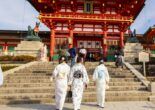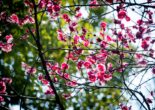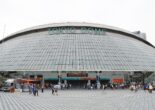There is no railway to the top of the tallest mountain in Japan. But there is a railway that gives you unparalleled views of the holy mountain. And you can stop at the largest amusement park in the Tokyo region on the way. Read on to find out more.
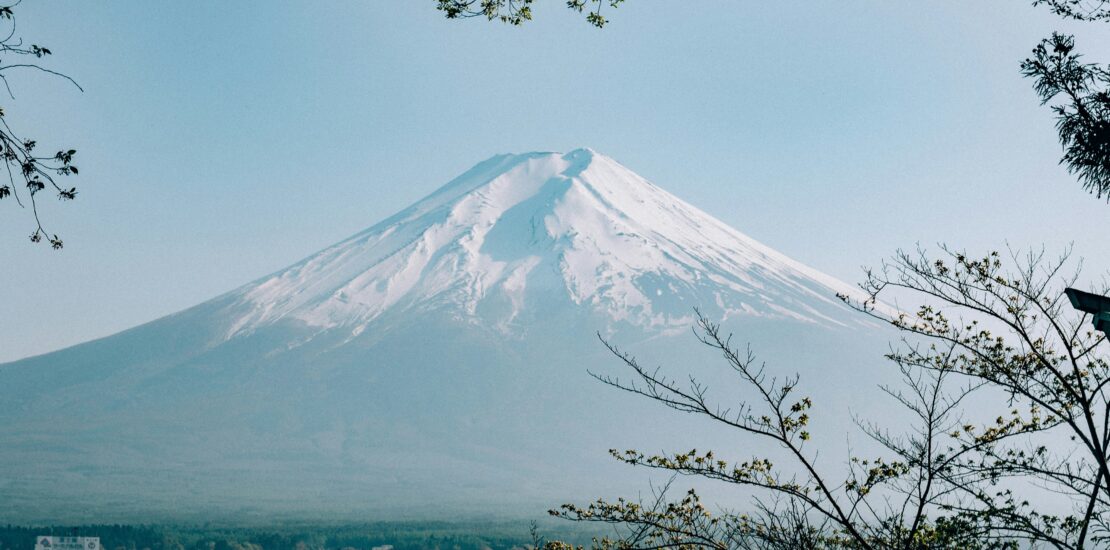
When you get really close — even as close as the fifth station, at the tree line – you do not see it anymore. The field of vision is completely dominated by Mount Fuji. You simply can not see anything else. To get one of those pictures all tourists want to get, you have to back up a bit. Preferably a few miles.
The view of Mt Fuji is famous from the Fuji Five Lakes area, especially the city of Kawaguchiko, where tourists from all over the world have been flocking to take photos of a convenience store with the mountain in the background in such numbers that the city authorities had to set up a screen to limit the number of people who try to take pictures of the mountain from the other side of the street, becoming a traffic hazard as they wantonly cross the street without regard for oncoming cars.
Fuji and pagoda
Neighboring cities are also full of famous viewpoints. Most people have seen pictures of the Churei Pagoda, one of the most quintessential views of Japan, with a five-story pagoda and Mt Fuji in the background.
The valley connecting the Yamanashi prefecture with Tokyo is full of tourist sights, hotels, and onsen ryokan. It is perfect for a weekend getaway if it is possible to get rooms when temperatures in Tokyo creep over 40 degrees centigrade and the locals escape to the mountains to cool off. But it also has something else that is unique: A railroad with views of Mt Fuji.
Community railroad with a view
Like so many other places in Japan, the railroad is what holds the local society together. It is what high school students ride to school, and how you get to the dentist in the next town. If it were not for the fact that it runs on the north side of Mt Fuji, the Fujikyu Railway would be a struggling rural railroad like so many others throughout Japan.
But Mount Fuji, both a UNESCO world heritage and a major tourist attraction, is a huge draw for visitors who want to experience Japan. Or maybe just take a selfie in front of the Kawaguchiko Lawson with Mt Fuji in the background for their Instagram account.
JR Fuji observation train
Kawaguchiko is one of the termini of the Fujikyu railway; Otsuki, which connects with the JR trains, is the other. In Otsuki you can change from the JR trains to Yamanashi or Tokyo, or you can take the Fujikyu Fujisan View Express.
JR operates trains from Tokyo to Yamanashi; in season, you can buy a day trip which includes both all-you-can-eat grape picking and wine tasting. But there is a JR train for observing Mt Fuji as well. The Fuji Excursion trains run on the Fujikyu Railway tracks to Kawaguchiko. The advantage is that you do not have to change trains in Otsuki, but the disadvantage is that you will miss one of the most charming railway experiences in the Tokyo area.
Three types of Fuji trains
You have three train types to choose from between Otsuki and Kawaguchiko on the Fujikyu railway. The first is the local train, which operates frequently, does not require special reservations, but does not have dedicated viewing areas for viewing the mountain.
The second is the Fujisan Express, a train which is built with viewing areas, huge windows, and generally anything you want to see Mt Fuji from the train.
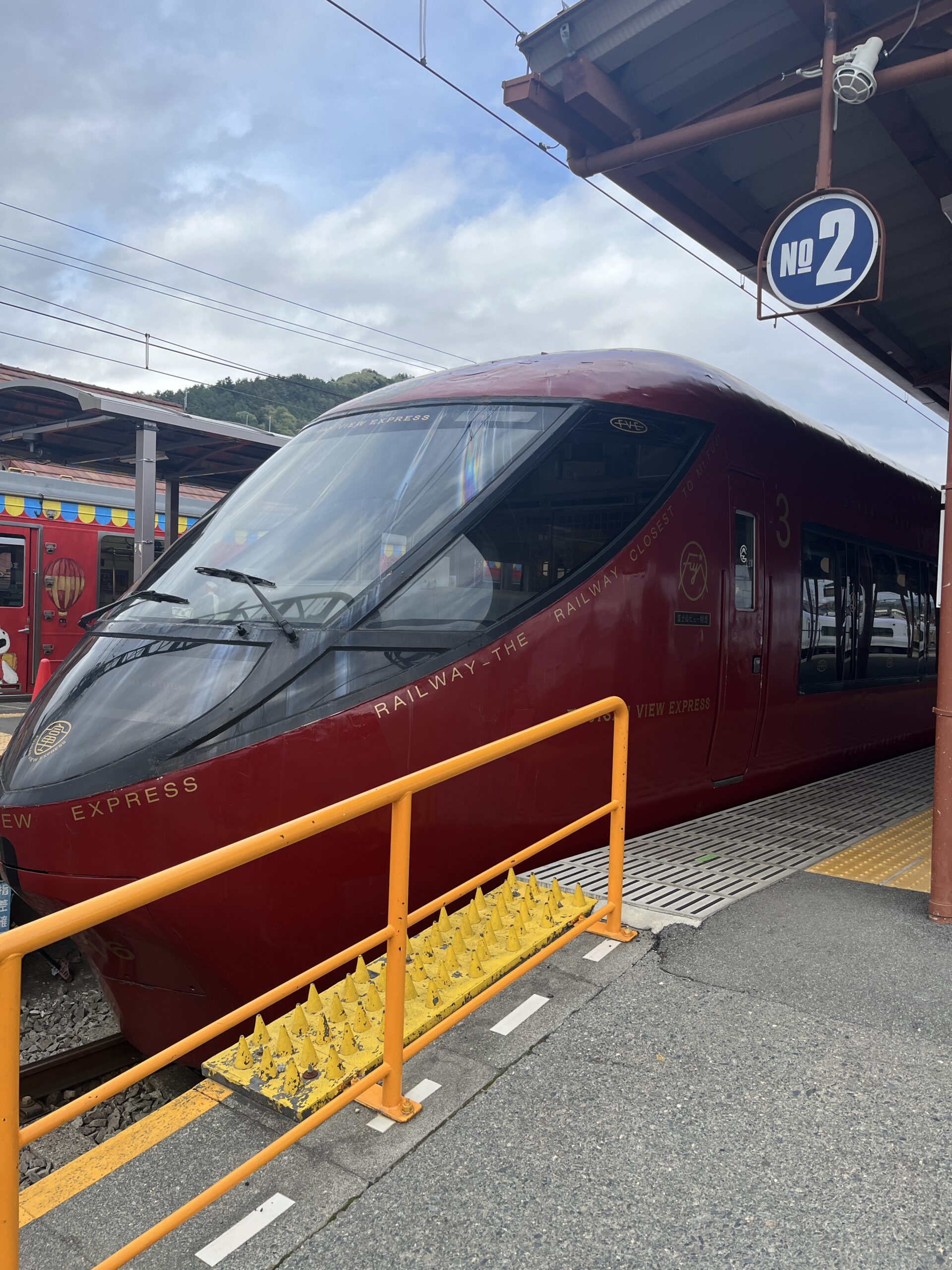
Fujisan View Express
And the third option is one of the most charming railway experiences in the Tokyo area: Fujisan View Express. Although anywhere else it would not be called “express”.
45 minutes of Fuji views
This is a luxury (and pricey) option for traveling the short distance from Otsuki to Kawaguchiko (or the other way around) in style. And while the ordinary class compartments offer a stylish enough environment to catch glimpses of Mt Fuji, the first car of the train is where the action is.
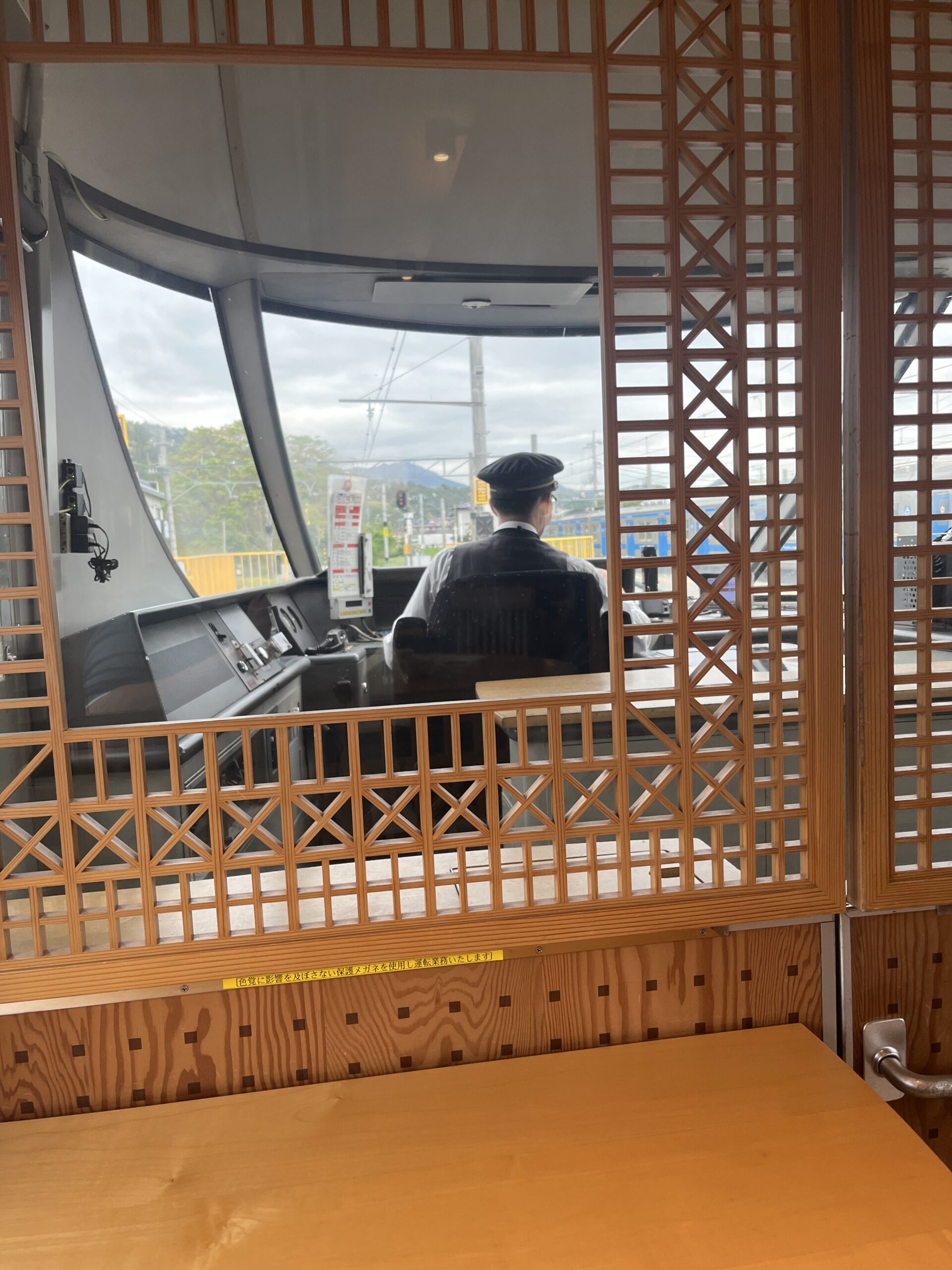
From the first car, you can see the driver’s view.
The first car of the Fujisan View Express has a huge panoramic window in front, and borrowing a page from the even more luxurious SpaciaX train to Nikko, the front compartment has a glass wall between the passengers and the driver, so they can see what he is doing to drive the train. With Mt Fuji in the background.
No ordinary train compartment
The front compartment is no ordinary train compartment, either. It is more like a modern cafe. The ordinary train benches have been replaced by tables and chairs, all-natural wood. The renovation is extremely recent, and everything is new and fresh as of 2024.
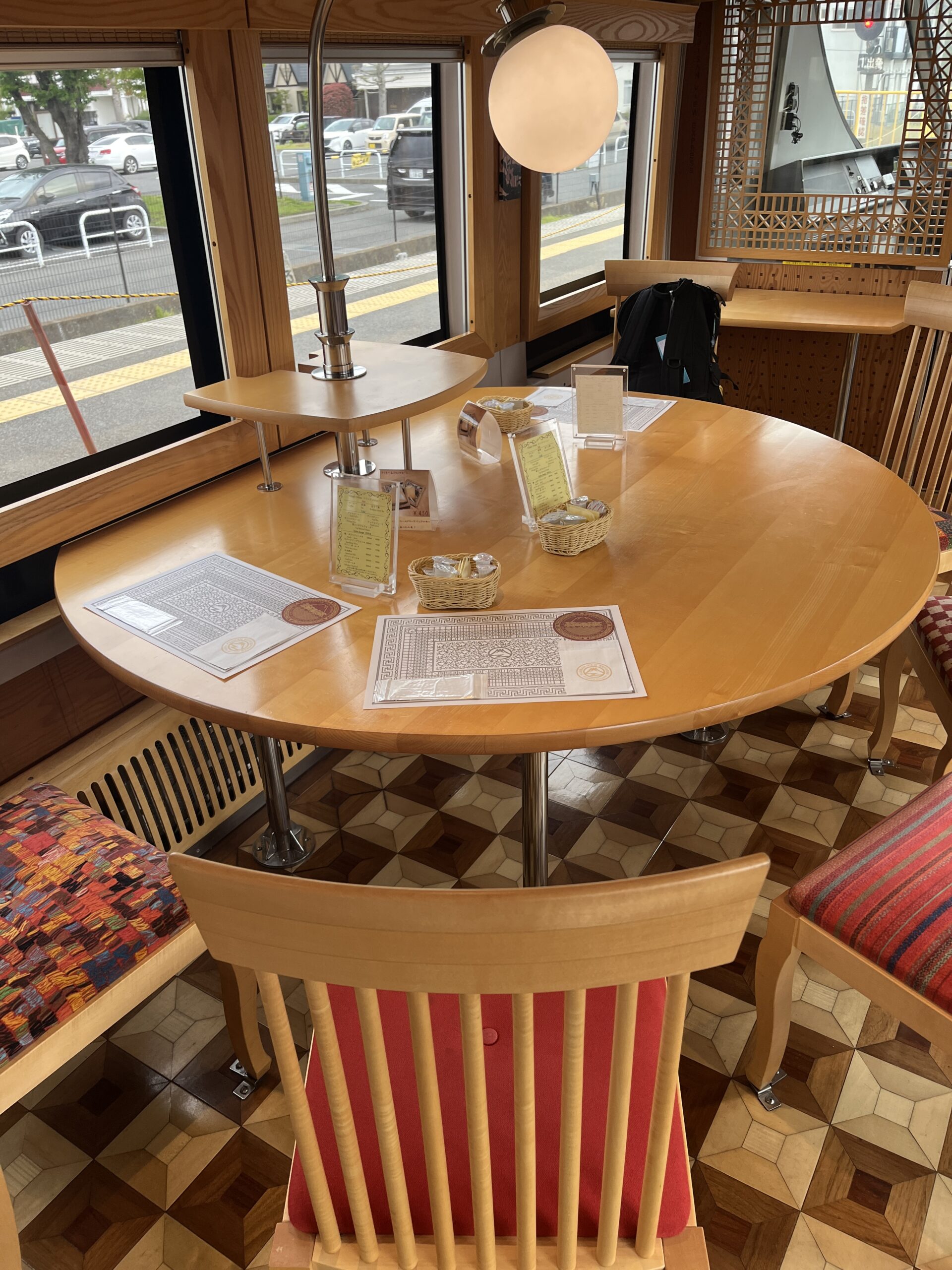
The first car has cafe seating.
In a car with cafe seating, you would expect cafe service. And that is exactly what you get. Your first beverage (as long as it is alcohol-free) is included in the ticket price. But the staff at the Fujikyu Fujisan View Express will be happy if you ask for a beer – because this is one of the few trains in the world that has its own beer.
Fuji station without view
The Fujiview Express trains stop only at Mt Fuji station on their way from Otsuki to Kawaguchiko, and the same on their way back. This is not the station where you will have the best views of Mt Fuji, nor is it the station for the FujiQ amusement park (that is the next one). The trains pull in there and then change direction, which means the Fujiview Express car number one now is the last car of the train.
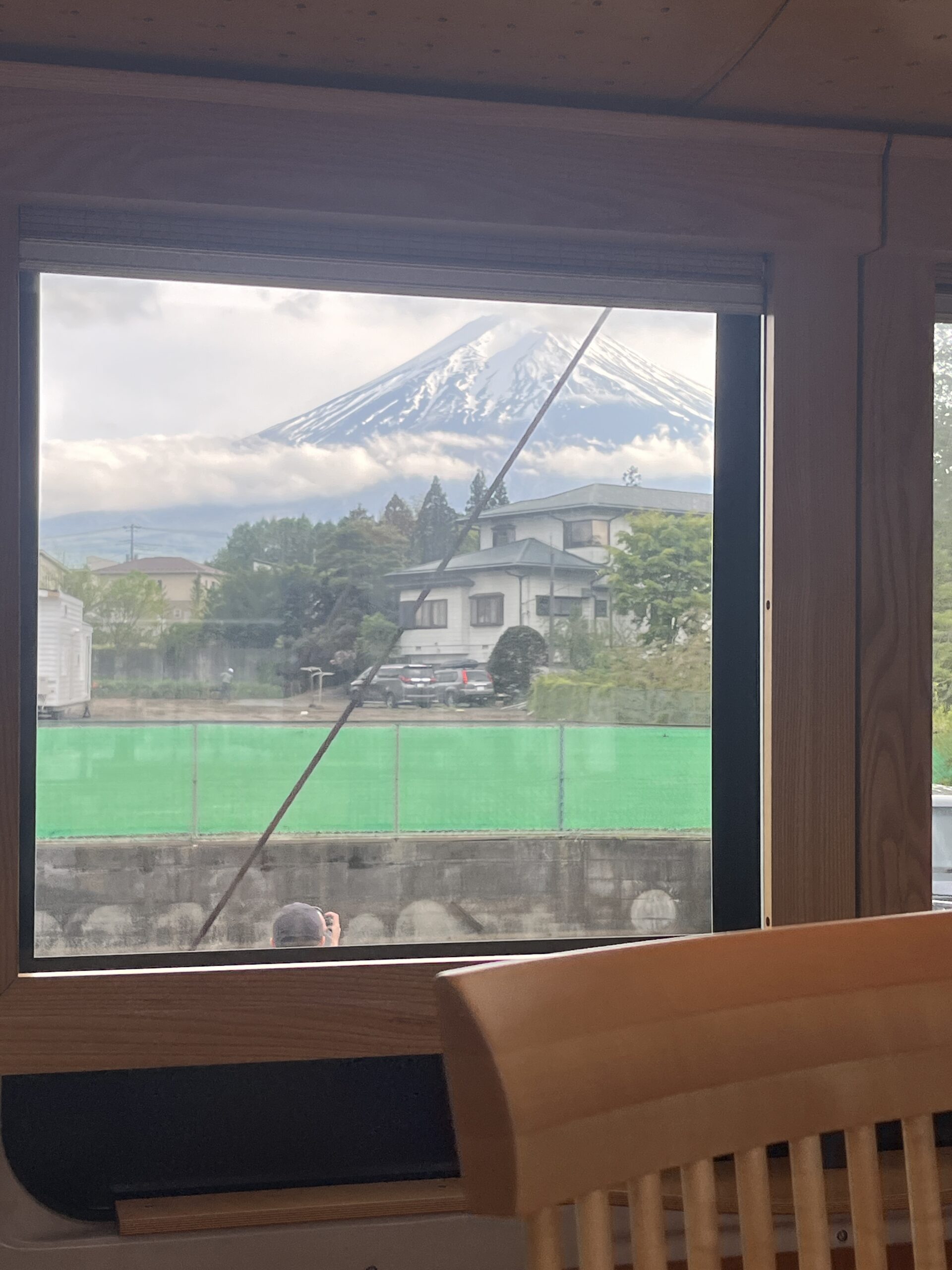
Mount Fuji is the main attraction of the Fujikyuko Railway
It is not by chance that the railroad and the amusement park share the same name. The FujiQ amusement park is owned by the Fujikyu Railway. If you are a fan of rollercoasters, you should stop here – this is the only place in the world where you can ride rollercoasters with a view of Mt Fuji. If rollercoasters are not your thing, there is an observation tower built into the biggest rollercoaster, that gives excellent views of Mt Fuji. Without actually riding the rollercoaster.
Super-Shinkansen track sighting
The staff work hard to point out the sights you are seeing along the route, but apart from Mt Fuji there is only one notable sight along the route. If they did not point it out you would probably write it off as a highway tunnel or hydropower transport, but the greyish tube of acrylic glass that crosses the tracks of Fujikyu Railway is the future of ground transportation – in the case of Japan, quite literally.

There are local souvenirs on sale aboard the train.
The tube is part of an experimental test track for a linear motor magnetic levitation train, that eventually will replace the Shinkansen. The train will mostly run in tunnels where the air is evacuated (much like the Hyperloop thought prototype of Elon Musk), and it will fly over the tracks on a magnetic cushion, making speeds of 500 km or more feasible.
The tests have been completed and construction of the tracks to Nagoya are underway, incorporating the tunnel over the Fujikyu Railway tracks. The operation was initially planned to start in 2027 but has been postponed.
Related Articles
Warning: Undefined array key "sfsi_threadsIcon_order" in /home/veremosglobal/tokyoroomfinder.com/public_html/blog/wp-content/plugins/ultimate-social-media-icons/libs/controllers/sfsi_frontpopUp.php on line 165
Warning: Undefined array key "sfsi_blueskyIcon_order" in /home/veremosglobal/tokyoroomfinder.com/public_html/blog/wp-content/plugins/ultimate-social-media-icons/libs/controllers/sfsi_frontpopUp.php on line 170
Warning: Undefined array key "sfsi_bluesky_display" in /home/veremosglobal/tokyoroomfinder.com/public_html/blog/wp-content/plugins/ultimate-social-media-icons/libs/controllers/sfsi_frontpopUp.php on line 266

